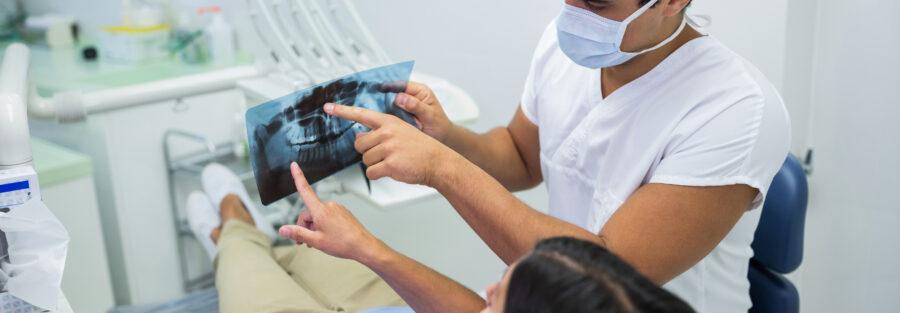ALL YOU NEED TO KNOW ABOUT DENTAL XRAYS
“Don’t worry, it’s just a little X-ray!”
How many times have you heard this in the dentist’s chair?
While it’s easy to feel a twinge of concern when you hear the word “X-ray,” the reality is that dental X-rays are a vital part of modern dental care and are much safer than what you might have been coerced into believing. Let’s dive into why dental X-rays are safe, the different types of X-rays you might encounter at the dentist, and how the dosage is carefully controlled to protect you.
What types of dental X-rays are there?
Dental X-rays come in different shapes and sizes, depending on the area of your mouth that needs examination. Here’s a quick rundown:
- Bitewing X-rays: Your dentist uses these to get a detailed look at the crowns of your teeth and to check for cavities between them. The radiation dose is low because the X-ray targets a small area of your mouth.
- Periapical X-rays: These show the entire tooth, from the crown down to the root. Dentists use these to examine teeth that might have infections, abscesses, or other issues below the gumline.
- Panoramic X-rays: This X-ray gives a full picture of your entire mouth—teeth, jaws, and surrounding structures. It’s helpful when your dentist needs to assess wisdom teeth, jaw problems, or potential orthodontic treatments.
- Cone Beam CT (CBCT): For more complex cases, such as planning dental implants or evaluating bone structure, dentists use CBCT, a 3D imaging system. It’s a more detailed X-ray, but it’s used sparingly because of the slightly higher radiation dose.
How much radiation do you actually get?
Here’s the reassuring part: dental X-rays involve very low doses of radiation.
For example, a single bitewing X-ray exposes you to about 0.005 millisieverts (mSv) of radiation, which is less than the amount of radiation you’d get from spending a day outside in the sun. For comparison, a panoramic X-ray gives you about 0.02 mSv, which is still minimal when stacked against the natural background radiation we’re all exposed to daily (around 3 mSv per year).
The high-tech X-ray machines used in modern dental practices are designed to minimize exposure, using tightly controlled beams and only focusing on the areas that need it.
Are dental X-rays safe for kids?
Absolutely! Children’s teeth are constantly changing, so X-rays are crucial for tracking their dental development. Dentists take extra precautions with children by using protective shields and lowering the radiation dose even further to make sure their little patients are safe.
What about frequent X-rays? Is there a risk?
If you’re someone who needs regular dental care, you might wonder whether frequent X-rays could pose a problem. The answer is: not really.
Dentists follow strict guidelines to avoid unnecessary X-rays, and most patients only need X-rays every one to two years unless there’s a specific concern. The cumulative exposure from dental X-rays over a lifetime is far lower than what you’d experience from just living in a naturally radioactive world (yes, we’re all exposed to low levels of radiation all the time).
How do dentists ensure my safety during X-rays?
Dentists take several precautions to ensure your safety:
- Lead aprons and thyroid collars: You’ll likely be draped with a lead apron to protect your body from any stray radiation. A thyroid collar, often used for younger patients, adds an extra layer of protection for your throat.
- Digital X-rays: Many dental offices have moved from traditional film-based X-rays to digital ones, which reduce radiation exposure by up to 80% compared to older methods.
- ALARA principle: Dentists follow the “As Low As Reasonably Achievable” (ALARA) principle, meaning they only take X-rays when absolutely necessary and with the lowest dose possible.
Should I ever avoid dental X-rays?
If you’re pregnant, it’s important to inform your dentist. While dental X-rays are considered safe during pregnancy, particularly if you’re using protective shielding, your dentist may choose to postpone non-essential X-rays until after your baby is born, just to be extra cautious.
The Bottom Line
Dental X-rays are an essential part of keeping your mouth healthy, and thanks to advances in technology, they’re incredibly safe. With low radiation doses, careful monitoring, and protective measures, you can feel confident that your trip to the dentist’s chair is more about maintaining a bright, healthy smile than worrying about radiation exposure.
So next time your dentist says, “It’s just a little X-ray,” you can relax, knowing you’re in good hands!

